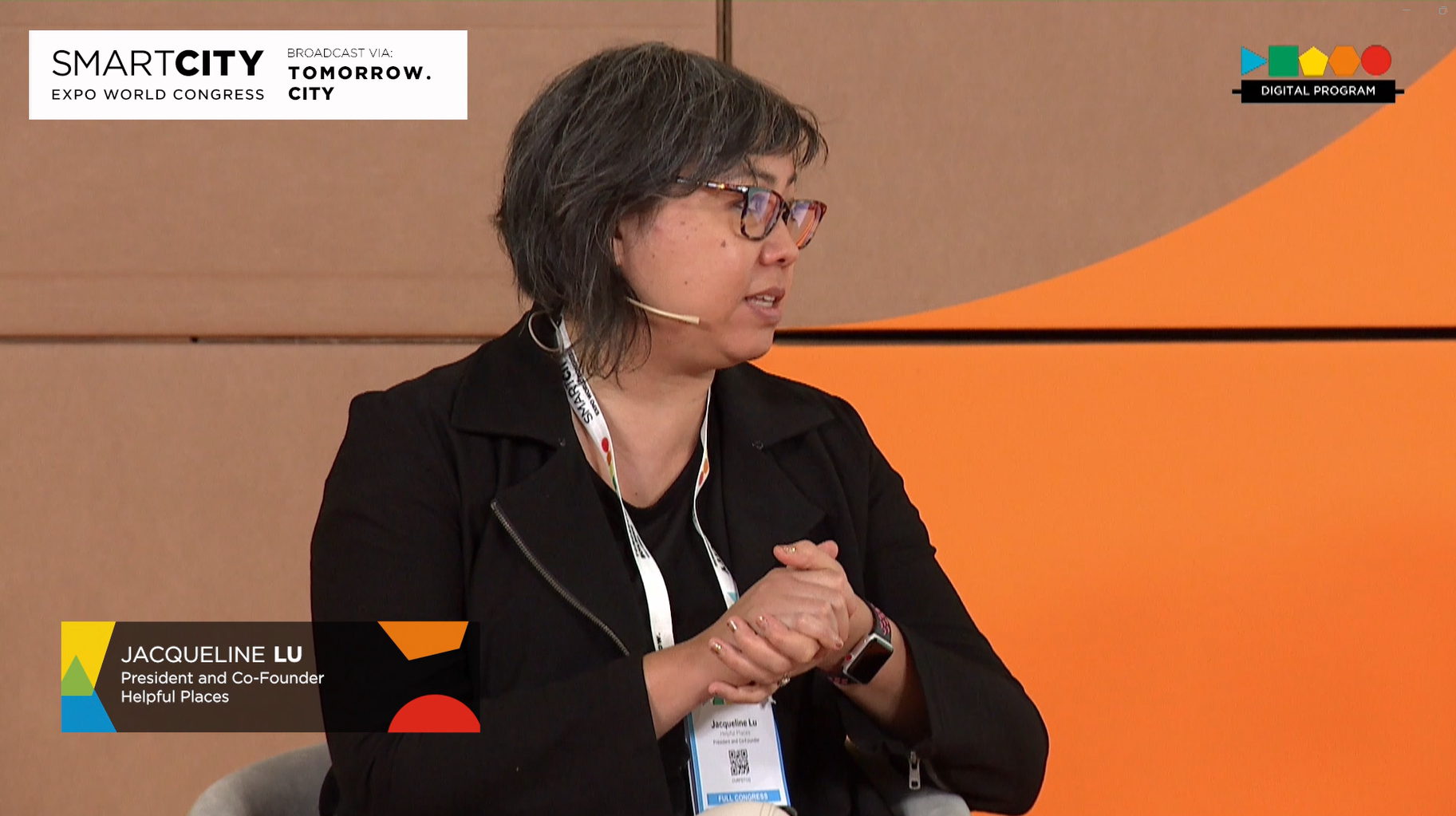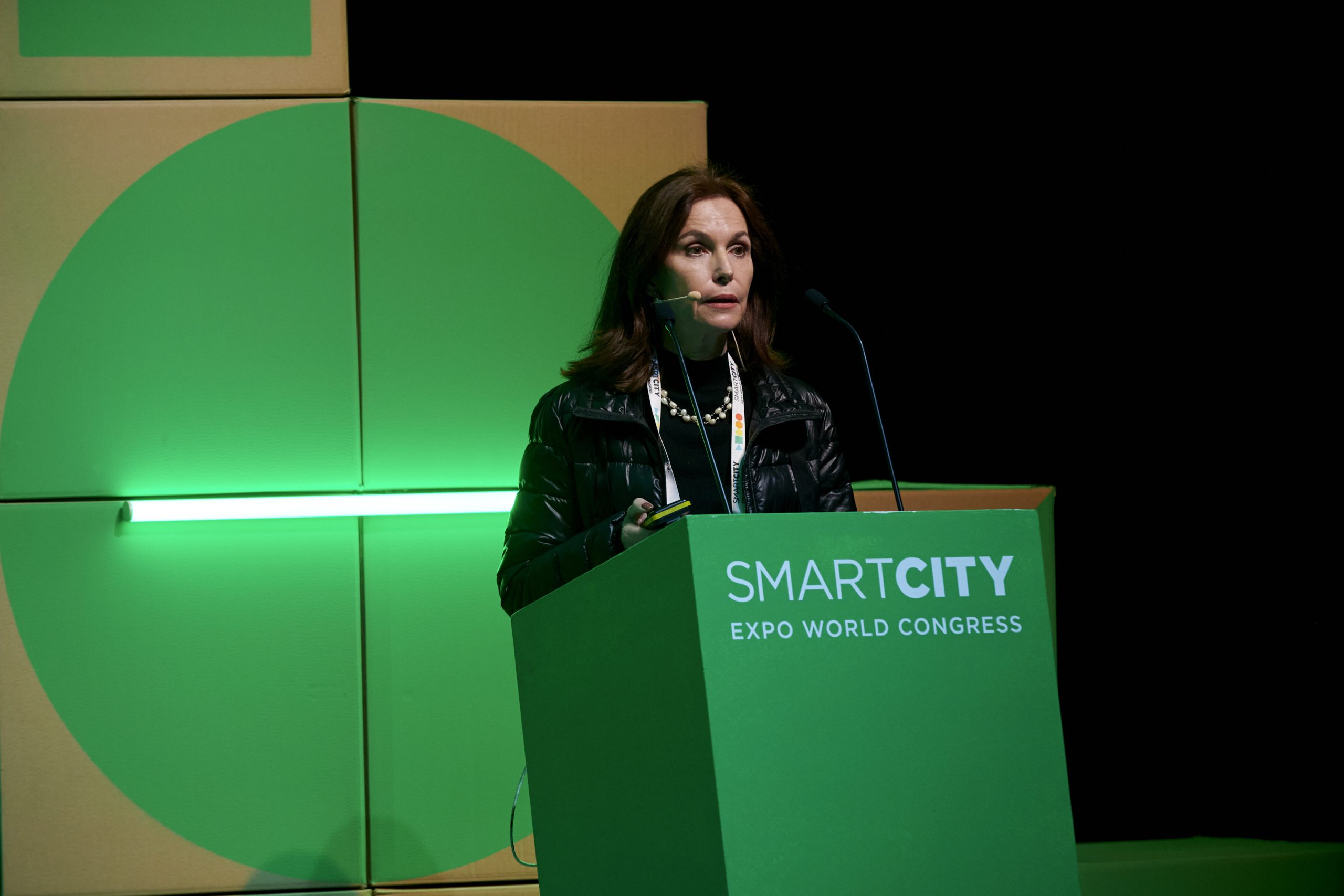This is a guest post by Lucía Bellocchio, founder and executive director of Trend Smart Cities. Lucía has extensive experience working on urban innovation, and has written in leading media outlets in South America like La Nación, El Observador, Clarín or TN.
The World Health Organization (WHO) estimates that globally, 1 in every 100 children has autism. In the United States, the Centers for Disease Control and Prevention (CDC) has identified – as of March 2023, the latest update of their study – 1 in every 36 8-year-old children as autistic, which accounts for 2.8% of their population.
Feeling overwhelmed by the noise of a busy street or the commotion of a crowded bus. Not understanding warning signs or traffic directions. The stress or anxiety of an unexpected bus route diversion or when there is construction work at a metro station. These situations can translate into significant obstacles that should prompt us to rethink urban design in a more accessible and inclusive way to ensure that individuals on the autism spectrum do not become isolated from urban life and, instead, can enjoy it.
What are the challenges of urban life for autistic individuals?
Autism (ASD) is a neurodevelopmental condition that affects aspects such as communication, social interaction, and behaviour. Individuals with autism often experience sensory difficulties, problems understanding nonverbal language, and challenges in adapting to changes in their environment. Therefore, different situations related to city life and the dynamics involved in moving around cities can present difficult situations.
Often, urban environments like metro or train stations and airports tend to be noisy, crowded, and visually complex or overwhelming. Loud noises, bright lights, and intense smells can cause sensory overload in individuals with autism, leading to anxiety or even sensory crises.
How many times have you gotten lost in a city because you couldn’t interpret a map or due to the complexity or lack of clarity of signage? Individuals with autism may have difficulty interpreting nonverbal signals or understanding maps and traffic signs. This lack of clarity in signage and the complexity of routes can lead to difficulties in navigating the city, increasing the risk of getting lost or feeling disoriented, and even relying on others to get around.
Where is this street? Is this the stop where I should get off? Using public transportation often involves social interactions, such as asking for directions, buying tickets, or responding to other passengers’ questions. These situations can be sources of stress for many autistic individuals, who may find it difficult to manage these spontaneous interactions.
Individuals with autism often prefer routines, and adaptability to changes can be a challenge, so they may feel uncomfortable with unexpected changes. In urban mobility, transportation delays, long and unpredictable queues, unexpected route diversions due to street works or incidents, flight cancellations, and other unforeseen events can cause distress, disorientation, anxiety, and/or stress.
How can inclusive urban design ensure a better urban life?
Cities are a fantastic opportunity for integration. “Cities are the chosen territory for people to live modern life, and this is largely due to the value placed on urban life, opportunities, social interaction, multiple uses in short distances; and proximity, in all its forms. Cities are the antidote to suburban isolation, to the refuge in closed capsules and hours spent in a car, also isolated. Cities are a huge opportunity for neurodivergent individuals, but these attributes, necessary for integration, are not enough, especially for neurodivergent individuals, who have the additional challenge of independent and fulfilling adult life. This is why those of us who design and intervene in cities have the enormous challenge of making them more friendly and inclusive,” says Álvaro García Resta, urban planner and father of Manolo, diagnosed with ASD six years ago.
Below are some aspects to consider to approaching an urban design that ensures the enjoyment of urban life and better mobility for the community within the autism spectrum:
Inclusive design
The first and fundamental step is to start with a design centred on the diversity of people using cities and their mobility systems. The interaction system with people must be designed in a way that includes individuals with neurodivergent conditions. This adaptation must be comprehensive so that neurotypical individuals are not solely responsible for making constant adjustments.
Designing structures, services, and environments from an inclusive approach from the beginning, could ensure that the entirety of the citizenry is attended to and integrated. The experiences, challenges, and perspectives of them, as well as those of the parents facing difficult situations in the urban environment, can provide valuable information for planning more accessible and friendly mobility that enables a more friendly urban life.
For example, considering the design of urban spaces and transportation systems that take into account the sensory needs of people with ASD could result in the creation of quiet areas in airports, train and subway stations, the reduction of noise or intense lights in certain places, the implementation of pictograms, sensory guides, among other things that could also help other people in certain situations.
Clear and understandable signage
Implementing clear and easily understandable signage can help better navigate the city and spaces. The use of pictograms and contrasting colours can make signs more accessible. Edinburgh Airport, for instance, provides social stories that help with predictability and reduce the unexpected. Some bus lines, such as line 85 in Argentina, are incorporating pictographic signage to ensure communicational and cognitive accessibility.
Staff training
Training public transportation and associated services personnel is essential: drivers, security staff, and other employees must be trained to understand the needs of people with autism and provide appropriate support. Having sensory toys in places, which help alleviate stress or help them regulate after a tense situation, is a practice that costs little and is easy to implement.
Assistive technology

Mobile apps or other technologies can be valuable tools to help them navigate the city. Apps that provide step-by-step directions, alerts about service changes, personalised routes, or a visual explanation of all this can reduce anxiety and improve independence.
The advent of smart cities, integrating advanced technologies like IoT, AI, and data analytics, offers a promising avenue to enhance the quality of life for autistic individuals. These cities can implement sensory-friendly infrastructure, such as quieter public spaces, adjustable lighting, and real-time crowd monitoring to reduce sensory overload. Additionally, smart technologies can provide personalised navigation aids, ensuring safe and accessible public transportation. Through the integration of smart home systems, individuals with autism can gain greater independence and autonomy, managing their daily routines with the help of assistive technologies.
Education, awareness, and empathy
People can make a difference when the environment poses challenges. Educational campaigns and putting the issue on the public agenda can help citizens better understand the needs of people with autism and be more empathetic, understanding, and collaborative.
Perhaps that child who cried or screamed the whole flight and didn’t let you sleep or the one who behaved inappropriately on the subway did not do it intentionally to bother you, but because of the stress that situation causes them. Perhaps upon seeing this, instead of judging the parents – whether they scold them, whether they are strict, etc. – it is better to offer help or simply understand the difficult situation that it represents for the person with autism and their caregivers. As the WHO states, “social attitudes and the level of support provided by local and national authorities are important factors that determine the quality of life of people with autism“.
Through inclusive and person-centred mobility design, clear signage, education and staff training, and the use of assistive technology, it could be possible to create urban environments that are more friendly and accessible for everyone, and that, moreover, people with autism – and their families – do not isolate themselves from urban life but, on the contrary, everyone can enjoy it equally. By fostering inclusivity through thoughtful design and innovative solutions, smart cities hold the potential to create environments that cater to the unique needs of autistic individuals, promoting their well-being and enabling them to thrive within the community.






















































